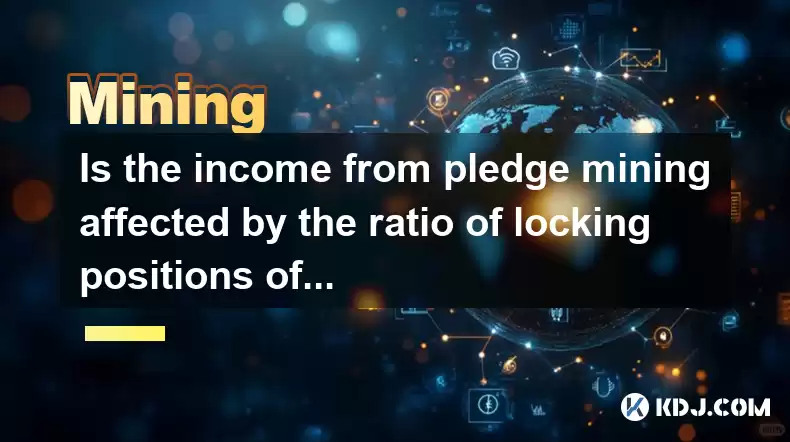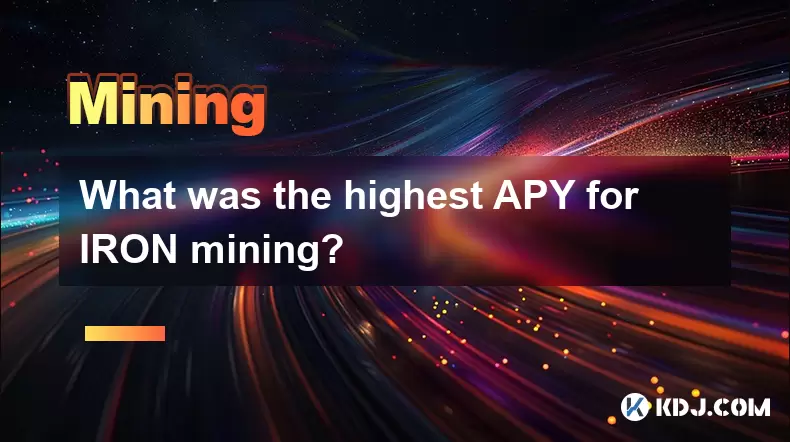-
 Bitcoin
Bitcoin $115200
0.74% -
 Ethereum
Ethereum $3730
6.71% -
 XRP
XRP $3.075
4.85% -
 Tether USDt
Tether USDt $1.000
0.01% -
 BNB
BNB $766.1
1.85% -
 Solana
Solana $168.7
4.22% -
 USDC
USDC $0.9999
0.00% -
 Dogecoin
Dogecoin $0.2097
5.42% -
 TRON
TRON $0.3327
1.72% -
 Cardano
Cardano $0.7547
4.04% -
 Stellar
Stellar $0.4156
4.83% -
 Hyperliquid
Hyperliquid $38.77
1.37% -
 Sui
Sui $3.589
4.15% -
 Chainlink
Chainlink $17.09
4.86% -
 Bitcoin Cash
Bitcoin Cash $574.6
5.82% -
 Hedera
Hedera $0.2523
1.95% -
 Avalanche
Avalanche $23.01
7.68% -
 Ethena USDe
Ethena USDe $1.001
-0.02% -
 Litecoin
Litecoin $120.4
9.83% -
 Toncoin
Toncoin $3.426
-4.06% -
 UNUS SED LEO
UNUS SED LEO $8.918
-0.53% -
 Shiba Inu
Shiba Inu $0.00001250
2.49% -
 Uniswap
Uniswap $9.956
8.52% -
 Polkadot
Polkadot $3.724
3.26% -
 Monero
Monero $304.7
0.19% -
 Dai
Dai $0.9999
-0.01% -
 Bitget Token
Bitget Token $4.394
1.48% -
 Cronos
Cronos $0.1400
6.96% -
 Pepe
Pepe $0.00001076
2.83% -
 Aave
Aave $268.4
3.45%
Is the income from pledge mining affected by the ratio of locking positions of pledge coins?
The income from pledge mining can be affected by the ratio of locking positions, with higher ratios potentially leading to greater rewards but less liquidity.
Apr 19, 2025 at 09:43 am

Is the income from pledge mining affected by the ratio of locking positions of pledge coins?
Pledge mining, a popular method within the cryptocurrency ecosystem, involves locking up a certain amount of cryptocurrency as collateral to participate in the mining process. The income generated from this activity is a key concern for many participants. A critical question that arises is whether the income from pledge mining is affected by the ratio of locking positions of pledge coins. This article delves into this topic, exploring the mechanisms behind pledge mining and the factors that influence its income.
Understanding Pledge Mining
Pledge mining is a process where users lock up their cryptocurrency to participate in the validation of transactions on a blockchain. This method is commonly used in Proof of Stake (PoS) and Delegated Proof of Stake (DPoS) systems. The primary goal of pledge mining is to secure the network while earning rewards in the form of additional cryptocurrency. The amount of cryptocurrency locked up as a pledge can vary, and this is where the concept of locking positions comes into play.
The Concept of Locking Positions
Locking positions refer to the duration and amount of cryptocurrency that a user locks up during pledge mining. Different cryptocurrencies may have varying requirements for the minimum and maximum amounts that can be locked, as well as the duration of the lock. The ratio of locking positions is essentially the proportion of one's total cryptocurrency holdings that are locked up in pledge mining. This ratio can influence various aspects of the mining process, including the potential income.
Factors Influencing Pledge Mining Income
Several factors can affect the income generated from pledge mining. These include the total amount of cryptocurrency locked up, the duration of the lock, the overall network conditions, and the specific cryptocurrency being mined. The ratio of locking positions is one such factor that can have a direct impact on the income. To understand this better, let's look at how different ratios can affect the outcome.
Impact of Locking Position Ratios on Income
The ratio of locking positions can influence pledge mining income in several ways. A higher ratio of locking positions generally means a larger amount of cryptocurrency is committed to the mining process. This can potentially lead to higher rewards, as many PoS and DPoS systems reward participants based on the amount of cryptocurrency they have staked. However, it also means that the user has less liquidity, as a significant portion of their holdings is locked up.
On the other hand, a lower ratio of locking positions means less cryptocurrency is committed to the mining process. This can result in lower rewards, but it also provides more liquidity, as the user has more of their holdings available for other uses. The optimal ratio can vary depending on individual financial goals and risk tolerance.
Case Studies: Different Ratios and Their Effects
To illustrate the impact of locking position ratios on pledge mining income, let's consider a few hypothetical case studies.
Case Study 1: High Ratio Locking Position
- Suppose a user locks up 80% of their total cryptocurrency holdings for pledge mining. This high ratio could potentially lead to higher rewards due to the large amount of cryptocurrency committed. However, the user would have limited liquidity and might face higher risks if the value of the cryptocurrency drops significantly.
Case Study 2: Moderate Ratio Locking Position
- Another user might choose to lock up 50% of their holdings. This moderate ratio balances the potential for higher rewards with maintaining some liquidity. The user can still earn significant rewards while having half of their holdings available for other uses.
Case Study 3: Low Ratio Locking Position
- A third user might opt for a low ratio, locking up only 20% of their holdings. This low ratio would result in lower rewards but would provide the user with high liquidity. The user can participate in pledge mining while keeping most of their holdings available for other investments or transactions.
Practical Considerations for Optimizing Locking Position Ratios
When deciding on the optimal locking position ratio for pledge mining, users should consider several practical factors. These include their financial goals, risk tolerance, and the specific requirements of the cryptocurrency being mined. Here are some steps users can take to optimize their locking position ratios:
Assess Financial Goals: Determine what you aim to achieve with pledge mining. Are you looking for maximum rewards, or do you need to maintain liquidity for other investments?
Evaluate Risk Tolerance: Consider how comfortable you are with locking up a significant portion of your holdings. Higher ratios can lead to higher rewards but also come with higher risks.
Research Cryptocurrency Requirements: Different cryptocurrencies have different requirements for pledge mining. Understand the minimum and maximum lock amounts, as well as the duration of the lock, to make an informed decision.
Monitor Market Conditions: Keep an eye on the market conditions and the value of the cryptocurrency you are mining. Adjust your locking position ratio as needed to balance rewards and risk.
Diversify Holdings: Consider diversifying your cryptocurrency holdings to spread risk. This can help you maintain a balanced approach to pledge mining and other investments.
Frequently Asked Questions
Q1: Can I change my locking position ratio during pledge mining?
Yes, many cryptocurrencies allow users to adjust their locking position ratios during the mining process. However, this may depend on the specific cryptocurrency and the platform you are using. It's important to check the rules and conditions of the cryptocurrency you are mining to see if adjustments are possible.
Q2: How does the duration of the lock affect pledge mining income?
The duration of the lock can significantly impact pledge mining income. Longer lock durations often lead to higher rewards, as they demonstrate a higher commitment to the network. However, longer locks also mean less liquidity, so users need to balance the potential rewards with their need for access to their funds.
Q3: Are there any risks associated with a high locking position ratio?
Yes, there are risks associated with a high locking position ratio. The primary risk is reduced liquidity, as a large portion of your holdings is locked up and unavailable for other uses. Additionally, if the value of the cryptocurrency drops significantly, you could face substantial losses, especially if you cannot access your locked funds to mitigate the impact.
Q4: Can the locking position ratio affect the stability of the blockchain network?
Yes, the locking position ratio can impact the stability of the blockchain network. A higher ratio of locking positions can contribute to a more stable network, as it indicates a higher level of commitment from participants. However, if too many users lock up a high percentage of their holdings, it could lead to reduced liquidity in the market, potentially affecting the overall health of the network.
Disclaimer:info@kdj.com
The information provided is not trading advice. kdj.com does not assume any responsibility for any investments made based on the information provided in this article. Cryptocurrencies are highly volatile and it is highly recommended that you invest with caution after thorough research!
If you believe that the content used on this website infringes your copyright, please contact us immediately (info@kdj.com) and we will delete it promptly.
- Cryptocurrency, Altcoins, and Profit Potential: Navigating the Wild West
- 2025-08-04 14:50:11
- Blue Gold & Crypto: Investing Disruption in Precious Metals
- 2025-08-04 14:30:11
- Japan, Metaplanet, and Bitcoin Acquisition: A New Era of Corporate Treasury?
- 2025-08-04 14:30:11
- Coinbase's Buy Rating & Bitcoin's Bold Future: A Canaccord Genuity Perspective
- 2025-08-04 14:50:11
- Coinbase's Buy Rating Maintained by Rosenblatt Securities: A Deep Dive
- 2025-08-04 14:55:11
- Cryptos, Strategic Choices, High Returns: Navigating the Meme Coin Mania
- 2025-08-04 14:55:11
Related knowledge

What was the highest APY for IRON mining?
Jul 23,2025 at 05:14am
Understanding IRON Token and Its Mining MechanismThe IRON token is a stablecoin that operates within the Iron Finance ecosystem, primarily on blockcha...

What is impermanent loss in IRON pools?
Jul 23,2025 at 09:00am
Understanding Impermanent Loss in the Context of IRON PoolsImpermanent loss is a phenomenon that affects liquidity providers in decentralized finance ...

How to claim rewards from IRON mining?
Jul 23,2025 at 02:21pm
Understanding IRON Mining and Reward MechanismsIRON Finance operated as a decentralized finance (DeFi) protocol on the Polygon and Binance Smart Chain...

How to claim rewards from IRON mining?
Jul 29,2025 at 05:07am
Understanding IRON Mining and Reward MechanismIRON is a dual-token system designed to stabilize the value of a synthetic asset through a combination o...

IRON mining tutorial for beginners
Jul 27,2025 at 12:01am
What Is IRON and How Does It Work in the Cryptocurrency Ecosystem?IRON is a cryptocurrency token that operates on the Binance Smart Chain (BSC) and is...

How to calculate APY for IRON mining?
Jul 28,2025 at 09:49am
Understanding APY in the Context of IRON Token MiningWhen engaging in IRON token mining within decentralized finance (DeFi) platforms, Annual Percenta...

What was the highest APY for IRON mining?
Jul 23,2025 at 05:14am
Understanding IRON Token and Its Mining MechanismThe IRON token is a stablecoin that operates within the Iron Finance ecosystem, primarily on blockcha...

What is impermanent loss in IRON pools?
Jul 23,2025 at 09:00am
Understanding Impermanent Loss in the Context of IRON PoolsImpermanent loss is a phenomenon that affects liquidity providers in decentralized finance ...

How to claim rewards from IRON mining?
Jul 23,2025 at 02:21pm
Understanding IRON Mining and Reward MechanismsIRON Finance operated as a decentralized finance (DeFi) protocol on the Polygon and Binance Smart Chain...

How to claim rewards from IRON mining?
Jul 29,2025 at 05:07am
Understanding IRON Mining and Reward MechanismIRON is a dual-token system designed to stabilize the value of a synthetic asset through a combination o...

IRON mining tutorial for beginners
Jul 27,2025 at 12:01am
What Is IRON and How Does It Work in the Cryptocurrency Ecosystem?IRON is a cryptocurrency token that operates on the Binance Smart Chain (BSC) and is...

How to calculate APY for IRON mining?
Jul 28,2025 at 09:49am
Understanding APY in the Context of IRON Token MiningWhen engaging in IRON token mining within decentralized finance (DeFi) platforms, Annual Percenta...
See all articles

























































































